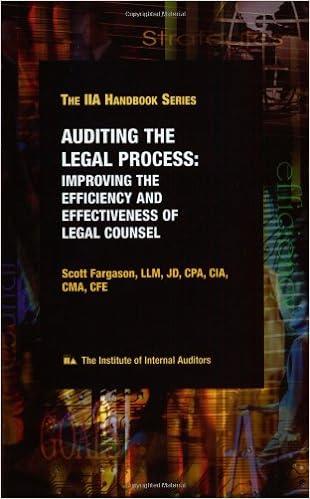Question
Classify each cost: PRODUCT INFORMATION Data related to the three AVS wines is as follows: Chardonnay-Estate contains only Chardonnay grapes that are grown for AVS
Classify each cost:

PRODUCT INFORMATION Data related to the three AVS wines is as follows: Chardonnay-Estate contains only Chardonnay grapes that are grown for AVS at the family vineyards. The 2010 sales projection for Chardonnay-Estate wine was estimated to be 24,000 bottles at an average sales price of $22 per bottle. Regular Chardonnay is blended by combining the Chardonnay wine left over after bottling the Chardonnay-Estate with the fermented generic wine; the blend mixture is two parts Chardonnay grapes and one part generic grapes. The average sales price is $16/bottle. Blanc de Blanc wine is made from all remaining generic white grapes. The average sales price is $11/bottle. All three wines are bottled at AVS using one bottling line. In a typical year, AVS bottles enough Chardonnay-Estate to meet the sales projection, and then bottles the regular Chardonnay after blending all remaining Chardonnay wine with the necessary amount of generic grapes. The Blanc de Blanc is the last wine to be bottled, using all remaining generic white grapes.
ADDITIONAL OPERATIONAL AND COST DATA CHARDONNAY GRAPES 2009 harvest: 100,000 pounds purchase price: $85,500 expected loss in volume through fermentation: 10% GENERIC WHITE GRAPES 2009 harvest: 60,000 pounds purchase price: $38,500 expected loss in volume through fermentation: 5% WINEMAKING Chardonnay grapes are fermented in oak barrels; each barrel results in the production of 40 cases of wine. Barrels cost $500 apiece. Because the barrels lose some of their oak flavorings each use, AVS uses the barrels for four years and then sells them to other wineries for $200. AVSs current barrels have been used for four years, so AVS will purchase all new barrels for the 2009 harvest. Generic white grapes are fermented in the holding tank; the tank can hold up to the equivalent of 2,000 cases of wine. BOTTLING Requires 36 pounds of grapes (post-fermenting) for one case (12 bottles) of wine In the bottling process, the wine is put into bottles, with both corks and labels added during this process. The materials cost associated with the bottles, corks, and labels averages $2.50/bottle. DIRECT LABOR Harvest labor is paid an average of $9.00/hour. An average of 80 pounds of grapes can be harvested each hour. Crush labor is paid an average of $10.00/hour. The crushing process typically takes 300 hours to complete. OVERHEAD EXPENSES Administrative rent and office expenses: currently $20,000 annually. Depreciation is charged based on the following equipment schedule: Equipment Cost Est. LifeTractors $15,000 10 yearsCrushers $6,000 10 yearsHolding Tank $40,000 20 yearsBottle Lines $10,000 10 yearsOther Production Equipment $15,000 5 years Indirect materials Part of the winemaking process involves introducing yeasts and other additives into the wine to help the fermentation process and to help balance the flavors in the wine. Indirect production materials average $1.55 per case of wine. Lab expenses Lab expenses of $8,000 are incurred for lab supplies and equipment. The lab is used by the production supervisor and the wine master to test the grapes and wine at various stages of production. Liquor taxes AVS is required to pay a liquor excise tax of $3/bottle on every bottle of wine sold. Production office AVS pays a part-time employee to help administer the production function. This employee orders supplies, reviews and approves production invoices, and performs other administrative functions. The production office budget is $12,000 annually. Sales and related Kays sister, Maria, is paid $30,000/year on a contract basis to sell AVS wines. She works through distributors, who are paid $2/bottle for each bottle sold. Supervision Kays brother, Albert, supervises the production of wine from the harvest through the bottling processes. His salary and benefits total $55,000 annually.
Utilities Utilities costs of $5,500 are incurred primarily to maintain a constant temperature in the fermenting process.
Waste treatment After crushing, the pulp, skins, and stems that are left over must be disposed of. One-half of the waste can be recycled back onto the fields as a compost material; the other half must be disposed of at a landfill with a dumping cost of $2,000. A winemaster is employed on a contract basis to help formulate and test the wines. AVS pays the winemaster $5,000 for each type of wine that is formulated. As the AVS manager, Kays annual salary and benefits total $75,000.
Cost Grapes 2) Bottles, labels, corks 3) Harvest labor 4) Crush labor 5) Indirect materials 6 Depreciation 7) Lab expenses 8 Production office 90 Utilities 10) Waste treatment 11) Wine master 12) Supervisor 13 Barnes 14) Administrative rent & office 15) Liquor taxes 16 Sales commissions 17 Sales manager 18 Administrative salary Over Relevant Range of Activity? or if Cost objective is Bottle of WineStep by Step Solution
There are 3 Steps involved in it
Step: 1

Get Instant Access to Expert-Tailored Solutions
See step-by-step solutions with expert insights and AI powered tools for academic success
Step: 2

Step: 3

Ace Your Homework with AI
Get the answers you need in no time with our AI-driven, step-by-step assistance
Get Started


